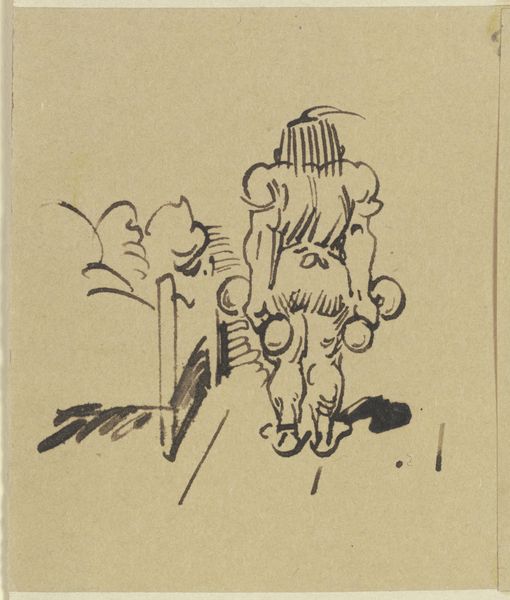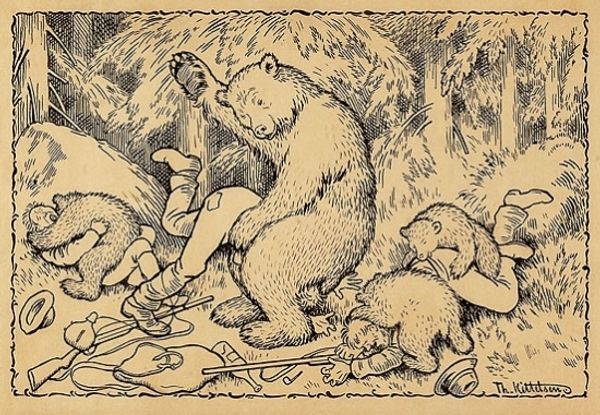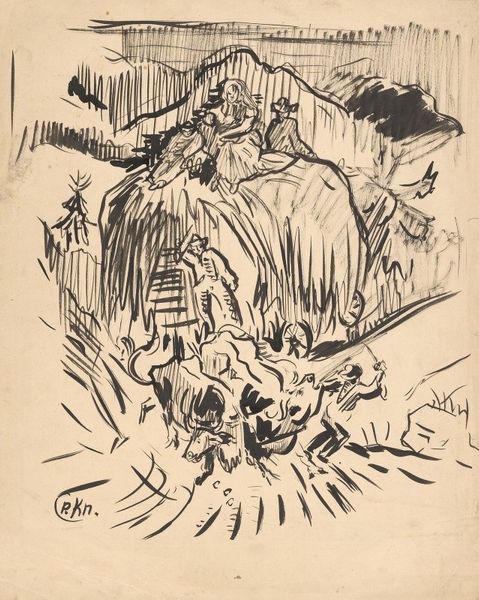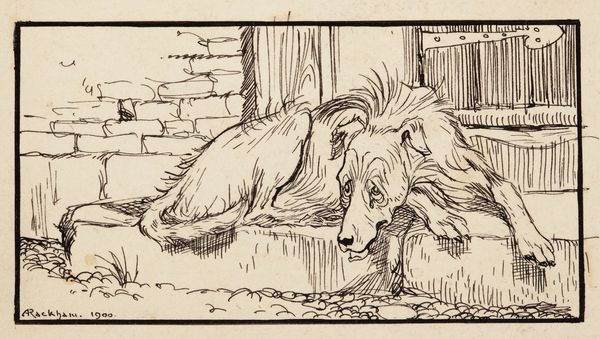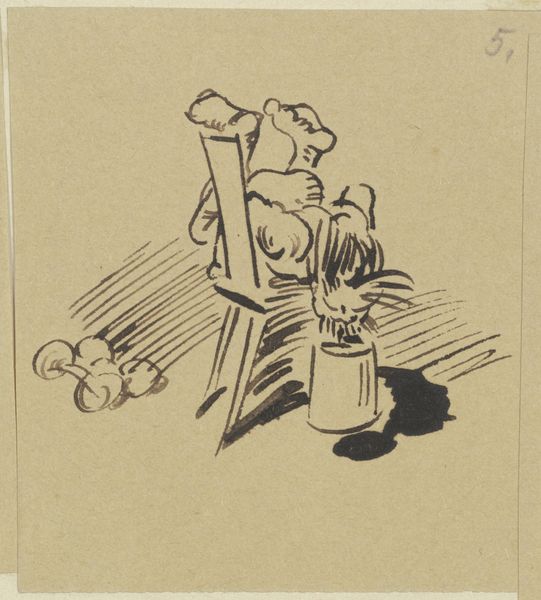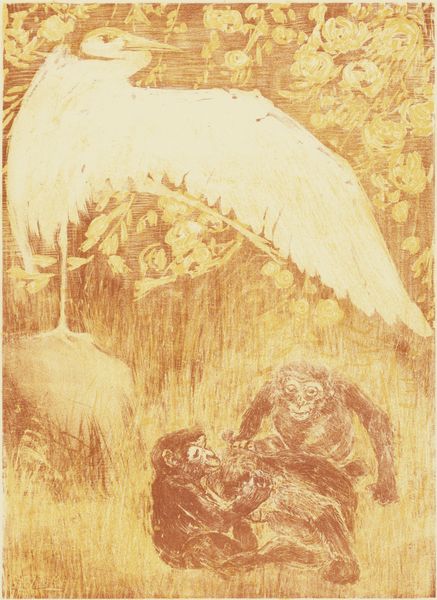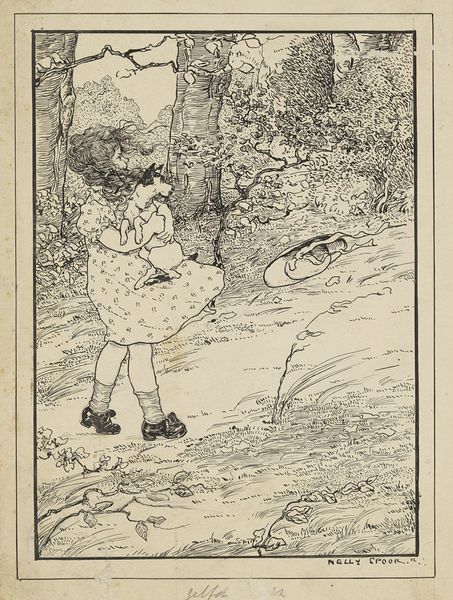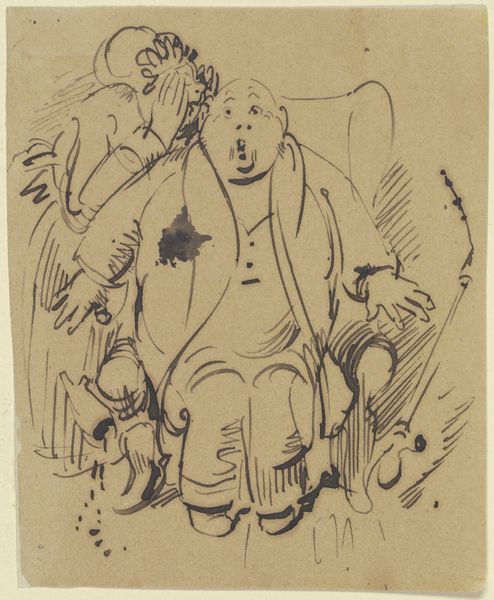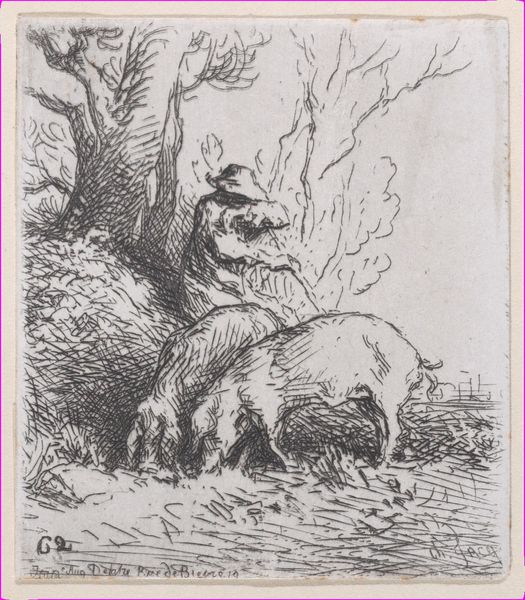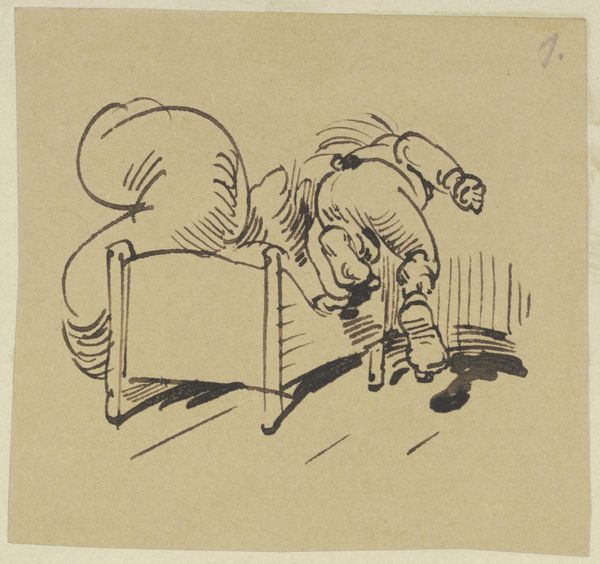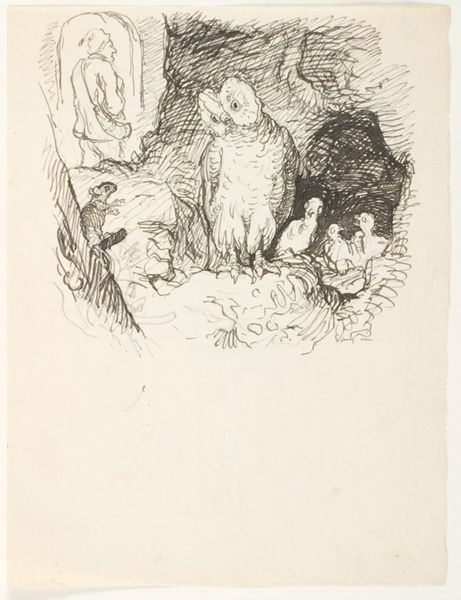
drawing, paper, ink
#
drawing
#
narrative-art
#
pen illustration
#
landscape
#
fantasy-art
#
figuration
#
paper
#
ink
#
folk-art
#
romanticism
#
line
#
genre-painting
Copyright: Public domain
Curator: So, we have before us Theodor Kittelsen's pen and ink drawing, "Troll Som Vasker Ungen Sin," or "Troll Washing its Child". Editor: Immediately, it strikes me as wonderfully grotesque and strangely tender. The overwhelming hairiness, the gnarled hands… it’s so tactile, almost comforting in its oddness. Like a scene from a nightmare that also wants to give you a hug. Curator: The drawing, with its heavy lines and stark contrasts, is typical of Kittelsen’s style. He used his art to explore Norwegian folklore and often imbued his trolls with human-like qualities, exploring themes of nature versus civilization, and anxieties around identity. In many ways, his trolls represent the repressed anxieties of a nation grappling with modernity. Editor: Absolutely. There's a definite feeling of unease alongside the implied domesticity. It’s not just a monster; it’s a parent. Look at the delicate way it's holding the child. A grotesque parody, sure, but with genuine warmth? I wonder what Kittelsen wanted us to feel, confronted with such a figure. Is it sympathy, or fear? Or perhaps a bit of both. Curator: His works gained relevance through national romanticism which served the purpose of visually constructing a unique national identity. Looking at this troll washing its child we could argue that Kittelsen is reflecting upon idealized images of motherhood in that time. He critiques them, and introduces a new representation. The mother is present, just… othered. Editor: It’s that “otherness” that I keep coming back to. It challenges our assumptions of beauty and familial roles. It's thought-provoking in the best possible way; unsettling but with undeniable artistry. Curator: Ultimately, I think Kittelsen encourages us to question the narratives we inherit. He shows us the monstrous in the mundane and compels us to confront it, or maybe even accept it. Editor: Exactly. Thanks to the artist we see something so outlandish that reflects something oddly recognizable in our reality. Makes one wonder if all parenting looks just a little like this, through a certain lens.
Comments
No comments
Be the first to comment and join the conversation on the ultimate creative platform.
